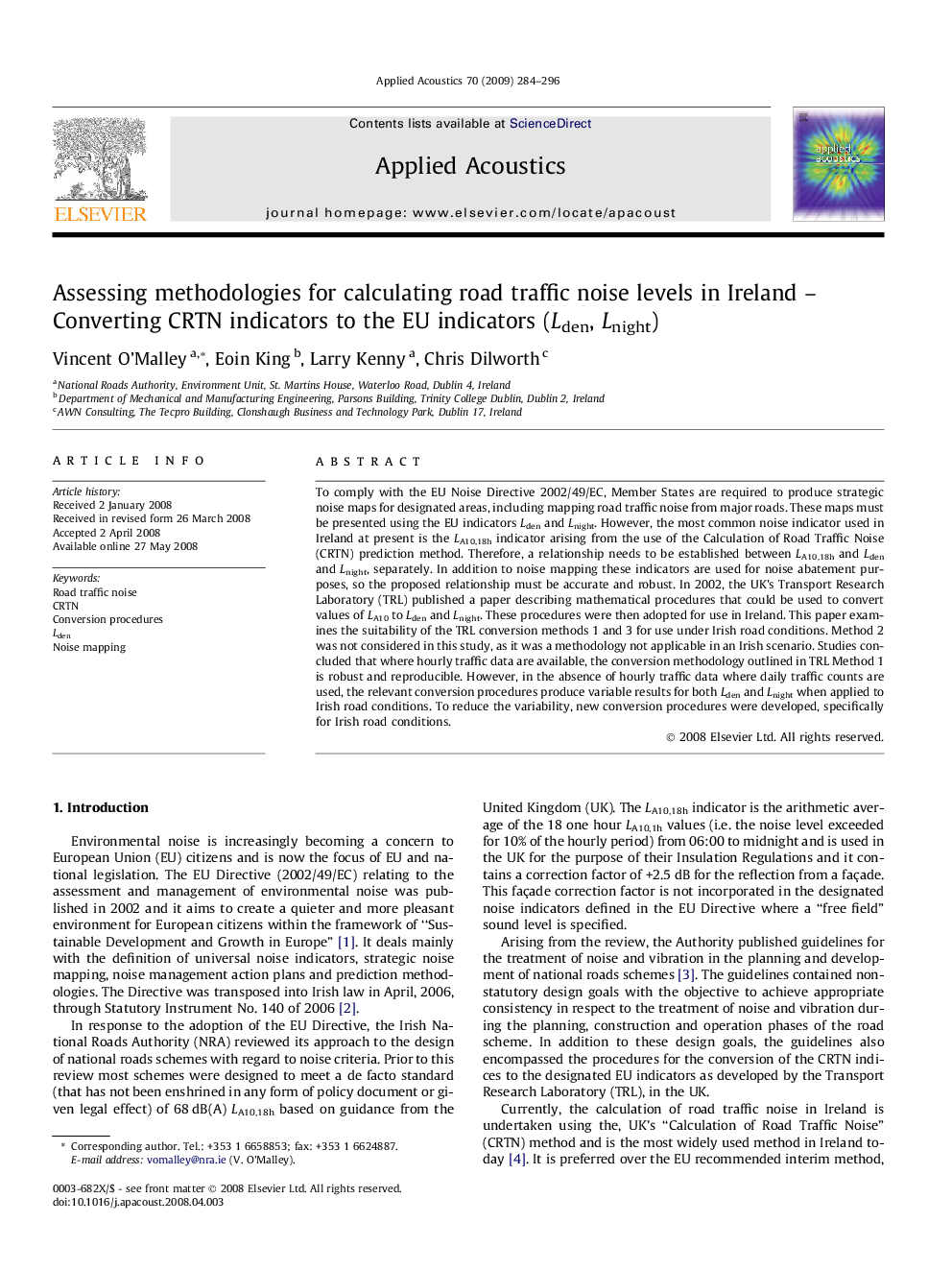| Article ID | Journal | Published Year | Pages | File Type |
|---|---|---|---|---|
| 755443 | Applied Acoustics | 2009 | 13 Pages |
To comply with the EU Noise Directive 2002/49/EC, Member States are required to produce strategic noise maps for designated areas, including mapping road traffic noise from major roads. These maps must be presented using the EU indicators Lden and Lnight. However, the most common noise indicator used in Ireland at present is the LA10,18h indicator arising from the use of the Calculation of Road Traffic Noise (CRTN) prediction method. Therefore, a relationship needs to be established between LA10,18h and Lden and Lnight, separately. In addition to noise mapping these indicators are used for noise abatement purposes, so the proposed relationship must be accurate and robust. In 2002, the UK’s Transport Research Laboratory (TRL) published a paper describing mathematical procedures that could be used to convert values of LA10 to Lden and Lnight. These procedures were then adopted for use in Ireland. This paper examines the suitability of the TRL conversion methods 1 and 3 for use under Irish road conditions. Method 2 was not considered in this study, as it was a methodology not applicable in an Irish scenario. Studies concluded that where hourly traffic data are available, the conversion methodology outlined in TRL Method 1 is robust and reproducible. However, in the absence of hourly traffic data where daily traffic counts are used, the relevant conversion procedures produce variable results for both Lden and Lnight when applied to Irish road conditions. To reduce the variability, new conversion procedures were developed, specifically for Irish road conditions.
